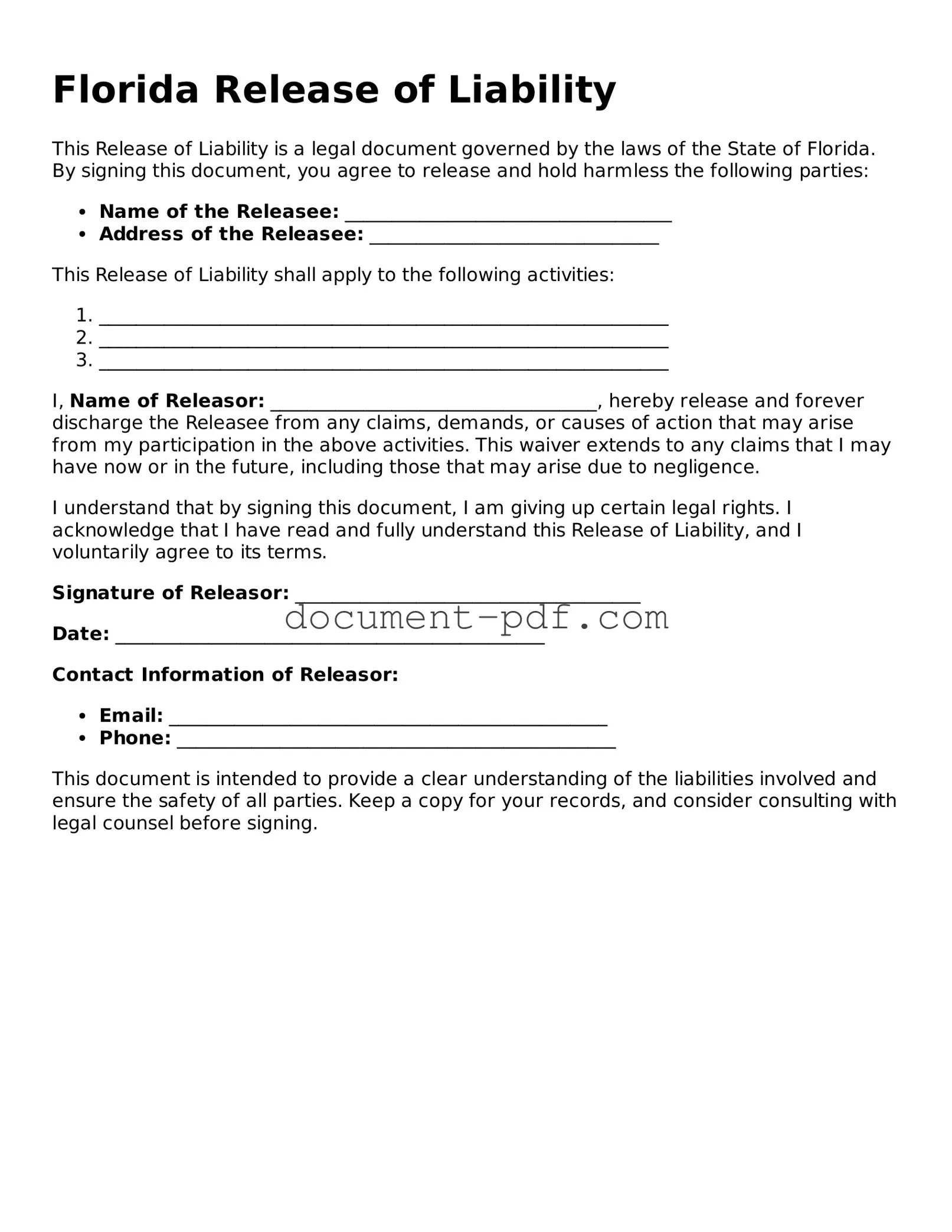Florida Release of Liability
This Release of Liability is a legal document governed by the laws of the State of Florida. By signing this document, you agree to release and hold harmless the following parties:
- Name of the Releasee: ___________________________________
- Address of the Releasee: _______________________________
This Release of Liability shall apply to the following activities:
- _____________________________________________________________
- _____________________________________________________________
- _____________________________________________________________
I, Name of Releasor: ___________________________________, hereby release and forever discharge the Releasee from any claims, demands, or causes of action that may arise from my participation in the above activities. This waiver extends to any claims that I may have now or in the future, including those that may arise due to negligence.
I understand that by signing this document, I am giving up certain legal rights. I acknowledge that I have read and fully understand this Release of Liability, and I voluntarily agree to its terms.
Signature of Releasor: _____________________________________
Date: ______________________________________________
Contact Information of Releasor:
- Email: _______________________________________________
- Phone: _______________________________________________
This document is intended to provide a clear understanding of the liabilities involved and ensure the safety of all parties. Keep a copy for your records, and consider consulting with legal counsel before signing.
